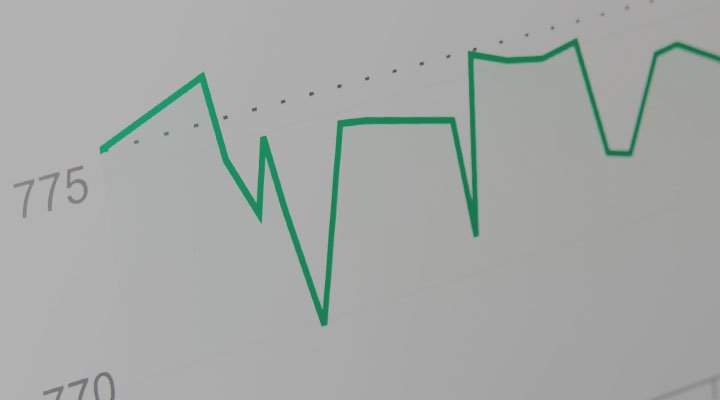Investment funds explained
Home › Investments › Investment funds
Investment funds are considered one of the best ways for beginners to earn good returns from their money. However, with great returns come equivalent risks, and that level of risk is a major factor affecting an investor’s motivation and willingness to invest. On this page, you’ll learn more about investment funds, how they work and their pros and cons, to help you decide if they are the right type of investment option for you.
Understanding investment fund types: from mutual funds to index funds, everything you need to know about your options
Risks and rewards: investment funds offer a diversified portfolio and potentially reduce the risk of loss from shares that fail
How can they differ? There are different types of investment funds to choose from, each with their own characteristics and benefits
What are investment funds?
An investment fund is a pool of capital that belongs to many individual investors. This capital is used to invest in stocks, bonds or other financial assets collectively.
An investment fund can offer diverse investment opportunities, good management and low fees. Both beginners and experienced investors often choose to put their money into investment funds because they are considered lower risk compared to investing in a single company.
What is the difference between active and passive investing?
The key difference between the two is that with active investing, a fund manager is required to actively manage the fund or account, whilst passive investing involves automatically tracking a particular index, such as the S&P 500.
Additionally, active investment aims to outperform an index or other benchmark, while passive investments only seek to track (or perform in-line with) the index they are following. Active investing also tends to be more expensive than passive investing. Although it does offer more flexibility, as the fund manager can choose which investments to add to the fund, active investments have historically performed mostly worse than passive investments over short and long periods of time.
How do investment funds work?
When you put money into an investment fund, you’re essentially purchasing shares. These shares can rise or fall in value. You have no control over which companies shares are purchased in, because active investment funds usually have a fund manager who manages every transaction.
Investment funds are typically made up of a mix of investments, which means that the fund is diverse in nature. Diversifying is often considered to lower the risk of an investment portfolio, because if one company you have shares in fails, your other shares or investments may be able to make up for that loss.
What are the different types of investment funds?
These are the main types of investment funds:
- Open-ended funds
- Closed ended funds
- Mutual funds
- Exchange traded funds
- Index funds
- Hedge funds
The main types of investment funds are similar, in that they allow you to invest in a diversified portfolio. However, understanding the features offered by each type of fund can be helpful if you’re looking to invest in a specific type that has features you find favourable, or that complement your investment goals. The different types of investment funds are as follows:
- Open-ended funds – institutions that offer this type of fund redeem their shares based on each day’s closing net asset value (NAV), meaning they are only priced once, at the end of a trading day. There is also no cap on how much an investor can pay in, as open-ended funds have a theoretically unlimited number of potential shares available.
- Closed-ended funds – this type of fund raises money through an initial public offering (IPO), which is similar to when a company goes public and begins trading their shares on the stock market. Closed-ended funds sell a fixed number of shares at one time, with a cap on how much money can be invested into the fund. Once this limit has been reached (i.e. there are no more shares available to buy), the fund is closed to further investors, and existing investors can’t sell their shares until the fund is liquidated.
- Mutual funds – this is the oldest type of investment fund. The total money invested is pooled and used to purchase baskets of shares. The unique trait of a mutual fund is that shares are priced and sold on a daily basis.
- Exchange-traded funds (ETFs) – An ETF is essentially a basket of securities’ that trade on an exchange, and track a particular index. When you invest in an ETF, you’re not picking a specific security, but rather choosing a particular market you want to invest in, such as the FTSE 100. They’re a type of investment vehicle, where your money is invested in many securities and thus diversified. Index funds mimic the performance of the index being tracked, rather than trying to beat it, which can generate steady returns, but also losses.
- Hedge funds – this type of fund is designed for professional investors with a high risk appetite. A hedge fund’s main goal is to generate big returns, regardless of which way the stock market flows. It can also be used to hedge risks via betting against an existing market portfolio.
Pros and cons of investment funds
Pros
- Active investment funds usually have a fund manager who makes decisions on where to invest your funds. Passive funds don’t.
- Funds are considered a lower risk investment option compared to investments in single stocks, because investment fund portfolios are diversified, which allows you to own different securities.
- You can invest any amount you wish in investment funds.
- Active Investment funds can be a good option for beginner investors, because they require little management, and you won’t have to make complex decisions on your own.
Cons
- Active investment funds have active managers who buy and sell frequently, which can incur fees for each transaction (more on fees below).
- Investment funds in general aren’t suitable if you want to invest over the short term, because passive funds are designed to mimic market performance, which often provides better returns over the longer term (see graph below), whereas active funds often cannot even keep up with market returns in the short or in the long run.
- Active investment funds limit your control because a fund manager manages them. If the fund is investing in a company you don’t like, you’re unable to do anything about it.
- Active investment funds demand higher fees than passive funds like ETFs and they usually cannot keep with the market performance over a long period of time.
Which investment fund should I choose?
Determining your investment goals will help you decide which investment fund might be the right choice for you. If you’re looking for the lowest risks on your investment, then you might want to consider investing in an index fund or an ETF for the lowest investment fees and choose asset classes with low volatility such as high rating government bonds.
If your goal is to gain experience in investing and you don’t want the hassle of choosing your own investments, you could choose to invest in an active fund that’s run by a fund manager. Please consider active funds demand higher fees from investors but often cannot even keep up with the performance passive funds.
Which investment fund you choose will come down to your needs, goals and the amount of risk you’re willing to take.
The information provided here is for informational and educational purposes only and does not constitute financial advice. Please consult with a licensed financial adviser or professional before making any financial decisions. Your financial situation is unique, and the information provided may not be suitable for your specific circumstances. We are not liable for any financial decisions or actions you take based on this information.
How do I buy and sell investment funds?
To buy into a fund and then sell your shares when you’re ready to do so, you’ll likely need to use a fund supermarket or investment platform. All investment platforms are online and are essentially your one-stop-shop for investing. You can purchase and hold funds using these types of platforms, and they typically allow you access to a wide range of funds.
Selling funds is just as easy as purchasing them. When you log in to your account, you’ll be able to see all the funds you hold and will usually simply be able to sell them from there. However, you should be aware that funds are typically not sold until the following day.
Do investment funds charge a fee?
he platform you sign up to will either charge a flat fee or a fixed fee for each transaction. A flat fee is usually for investors who put over £50,000 into their chosen fund. The fees you’ll incur for using the platform are typically charged quarterly or monthly, and it’s important to check all the fees before you sign up to anything.
If you have a fund manager, you may be charged an annual management charge. This charge is usually percentage based and averages between 0.75% and 1.25% for most actively-managed funds. The fund manager usually publishes their fees daily, and the fee also reflects the performance of the fund. Conversely, with a passive investment fund, fees tend to be lower – between 0.1% and 0.85%, which typically covers the fee for using your chosen investment platform.
What to consider when buying investment funds
When you have determined your investment goals and needs, the next thing you may want to consider is how long you’re willing to invest for. For most investment funds, you can typically acquire better returns if you choose to invest over the long term. However, some investment funds (usually those which are actively managed) can be utilised for short-term investments. But this is rare and comes with a high risk.
Investment funds vs savings accounts
Although investment funds have the potential benefit of high returns on your investment, they can be a risky option and certainly don’t come with any guarantees. In worst-case scenarios, the risk you’re taking by putting your money into investment funds is losing it all if share prices crash. The graph below shows the performance of the FTSE 100 over the last 20 years. As you can see, the stock market dipped dramatically in the early 2000s, crashed in 2008, and saw a rapid decline in 2020.
If you don’t want to take this risk, choosing to invest in safer options, such as savings accounts, might be more suitable for you.
Savings accounts, such as fixed rate bonds, notice accounts and easy access savings offer competitive interest rates, enabling you to grow your savings pot at a much lower risk. With a fixed rate bond, you know how much interest you’ll earn from the day you open the account until the end of your agreed term. Because UK-regulated bonds are protected by the Financial Services Compensation Scheme (FSCS), you can rest assured that your deposits are protected.
Save smarter with the Raisin UK newsletter!
What’s in it for me?
- Receive exclusive updates on market-leading rates
- Ensure you never miss a bonus offer
- Keep your finger on the pulse with the latest financial news


